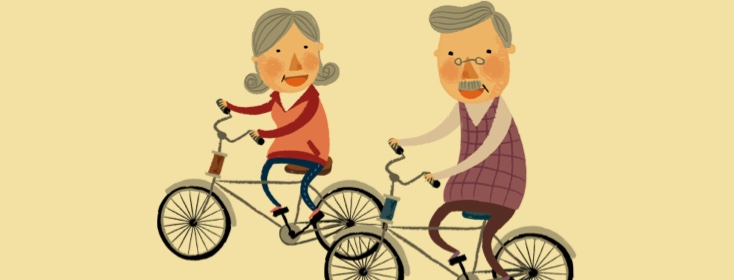Ways to Keep The Weight Off as We Age
As we age, there is a steady decline in the amount of muscle tissue in both men and women. Calorie needs are reduced with decrease muscle mass, making weight gain much easier. And as you know, it’s so easy to put it on, but so hard to take it off! That extra soy latte, which only adds 100 calories a day, can lead to a 10 pound weight gain in a year! So if you cut out that latte, you’ll be back to your goal weight, right? Unfortunately, weight loss is not that simple. However, there are some tricks that can help make it easier to keep that unwanted weight off.
- Consider strength-training exercises. Adding weight-bearing exercises to your routine will help you maintain muscle mass, which will keep your metabolism revved up even as you age.
- Nip weight gain the bud by using a 2-3 pound rule. Weigh in once a week, and if your weight is up, think about what unhealthy habit is starting to creep back in. Perhaps you need to cut out any eating after dinner and add 10 minutes to your exercise routine. If you can’t identify any bad habits, make some new small changes. See how to keep pounds from creeping up.
- Don’t let a lapse become a relapse. Too often, we have an all or nothing approach to healthy eating and exercise. Don’t let that mentality derail your progress. One missed workout or one unhealthy meal does not need to become a habit. Identify the slip-up and correct it as soon as possible.
- Don’t drop calories too low, but do drop them as you age. After the age of 30, adults lose 3-8% of their muscle mass per decade resulting in a fall in metabolism. It’s necessary to decrease our intake a bit as we age. However, dropping your calorie intake too low can leave you famished, which may set you up for overeating. Depriving your body of calories can also send it into starvation mode, where it hangs on to every calorie you consume. Avoid this trap by learning the appropriate amount of calories for your age, gender, and activity level.
- Fast after dinner until breakfast the next day unless medically indicated. If you do need a healthy snack choose something high in fiber, under 200 calories or that is nutrient dense. People tend to eat unhealthy calorie dense foods after dinner. We also eat because we are tired or bored, not because we are hungry.
- Always eat sitting down, with minimal distractions. It is so easy to overeat when you aren’t being mindful of what you are putting in your mouth. Eating in front of the TV or while browsing the Internet can distract you and make you unaware of the satiety cues your stomach is sending to your brain. At dinnertime, be sure to power off the electronics and focus in on what you’re eating. Not only will you be more aware of fullness cues, you will also be more satisfied with your meal!
- Play detective with your schedule. Figure out what your barriers are to achieving a healthier weight. Where are the extra calories sneaking in? Keep a food diary for a week, including weekends - see where you’re unconsciously snacking or small foods you’re not counting. Do you always grab the samples available at the grocery store? Are you sharing a co-worker’s snack in the late afternoon? These foods all count and the calories can add up, even if you don’t plan them or remember them.
- Pay attention to your emotions. How emotions influence eating habits differs from person to person. Some people crave high-fat, high-calorie foods when they are unhappy, upset, stressed, or fatigued. Overindulgences can distract you from other problems you don’t want to face, but are just that: a distraction. Emotional eating won’t fix any problems, and it could derail your weight loss or maintenance goals.
You may have just discovered why you’re having a hard time keeping the weight off. Now how are you going to make a change? Identify the problem, set your goal and action to overcome the problem, and revisit your goals weekly.

Join the conversation